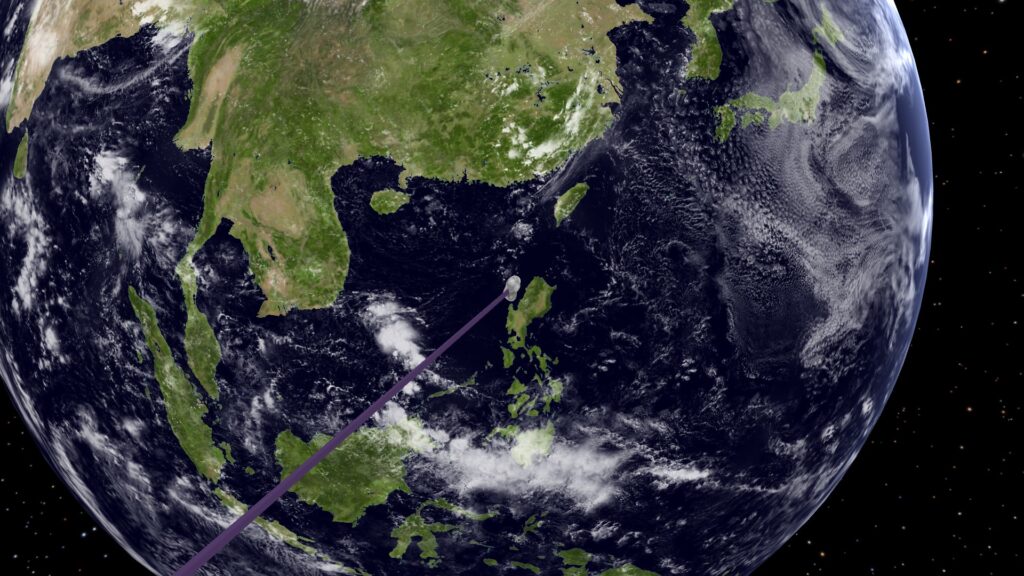In the previous video, you learned about the large asteroid 415029 (2011 UL21), which will pass 6.6 million km from the Earth on June 27, 2024. Less than 42 hours after that, our planet will approach another asteroid: 2024 MK. This video will show the close approach of this asteroid to the Earth, and it will also be possible to see where to look for it in the sky when observing from the Earth.
Unlike 415029 (2011 UL21), which has a diameter of about 2.5 km, the dimensions of 2024 MK are estimated in the range from 120 to 260 m. But it will come much closer to the Earth. The orbit of asteroid 2024 MK touches the Earth’s orbit almost at the perihelion point. This means that the asteroid passes through the vicinity of the Earth’s orbit at maximum speed relative to the Sun. Such a close approach of an asteroid of similar size occurs approximately once every ten years. Surprisingly, the same assessment of the rarity of the phenomenon was given for asteroid 415029 (2011 UL21). It turns out that at the end of June, two events will occur almost simultaneously, each of which (according to JPL NASA) happens only once in a decade!
Asteroid 2024 MK was discovered on June 16, 2024, that is, just two weeks before the close approach to the Earth. Calculations showed that on June 29, 2024 at 13:50 UTC, it will pass at a distance of about 295 thousand km from the center of the Earth. That’s about three-quarters of the distance to the Moon. At the same time, the asteroid velocity relative to the Earth will be 9.3 km/s. At this moment, it will be best seen from the territory of Australia and the islands of Oceania, where it will be observed almost at the zenith on the border of the constellations of Aquila and Sagittarius. The asteroid 2024 MK will reach its greatest brightness (8.73 apparent magnitude) a little earlier: on June 29 at 10:42 UTC, and it can be seen in the constellation Sagittarius even with binoculars. At nightfall, it will be possible to see it in the Northern hemisphere of the Earth: at 20:00 UTC, it will reach the Pegasus constellation. Its brightness will weaken to 10.71 apparent magnitude, but it will still be visible in amateur telescopes.
Modeling and rendering were performed by author of this publication using own software. The calculations took into account the mutual influence of the Sun, all the planets of the Solar System, the Moon and the asteroid on each other. Relativistic effects were also taken into account in the calculation.
The track Mercy by Kai Engel sounds in this video. This track was not changed. Attribution 4.0 International license.





